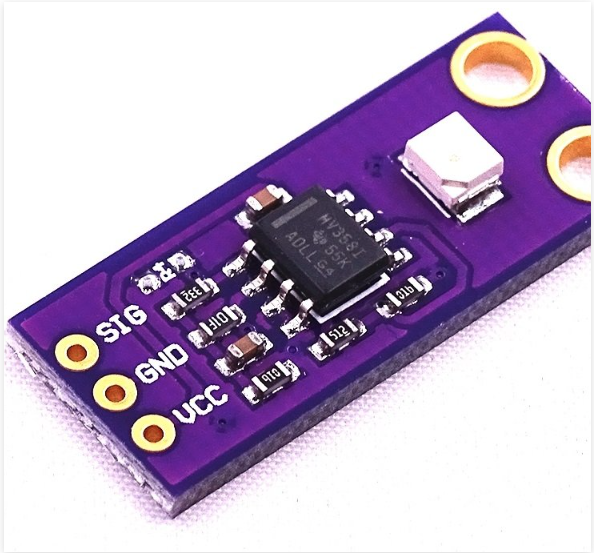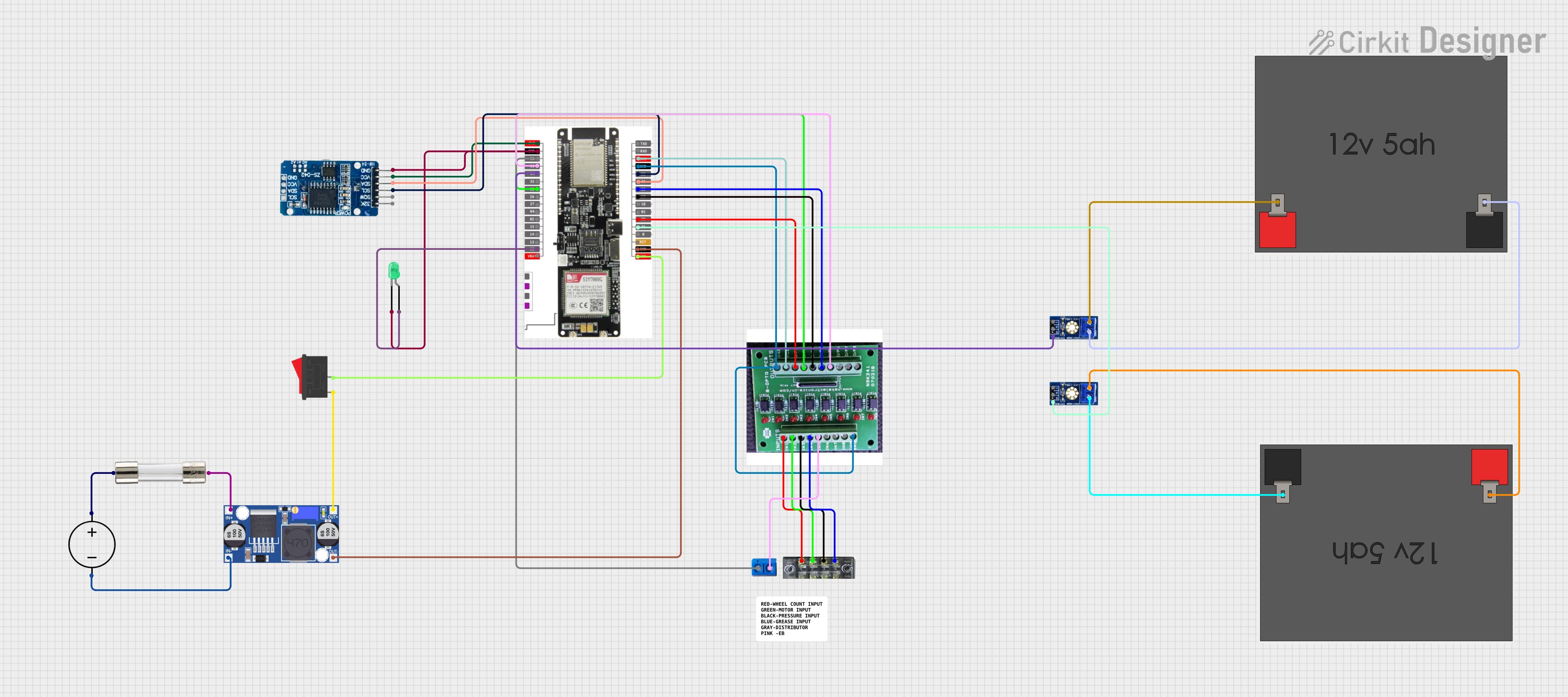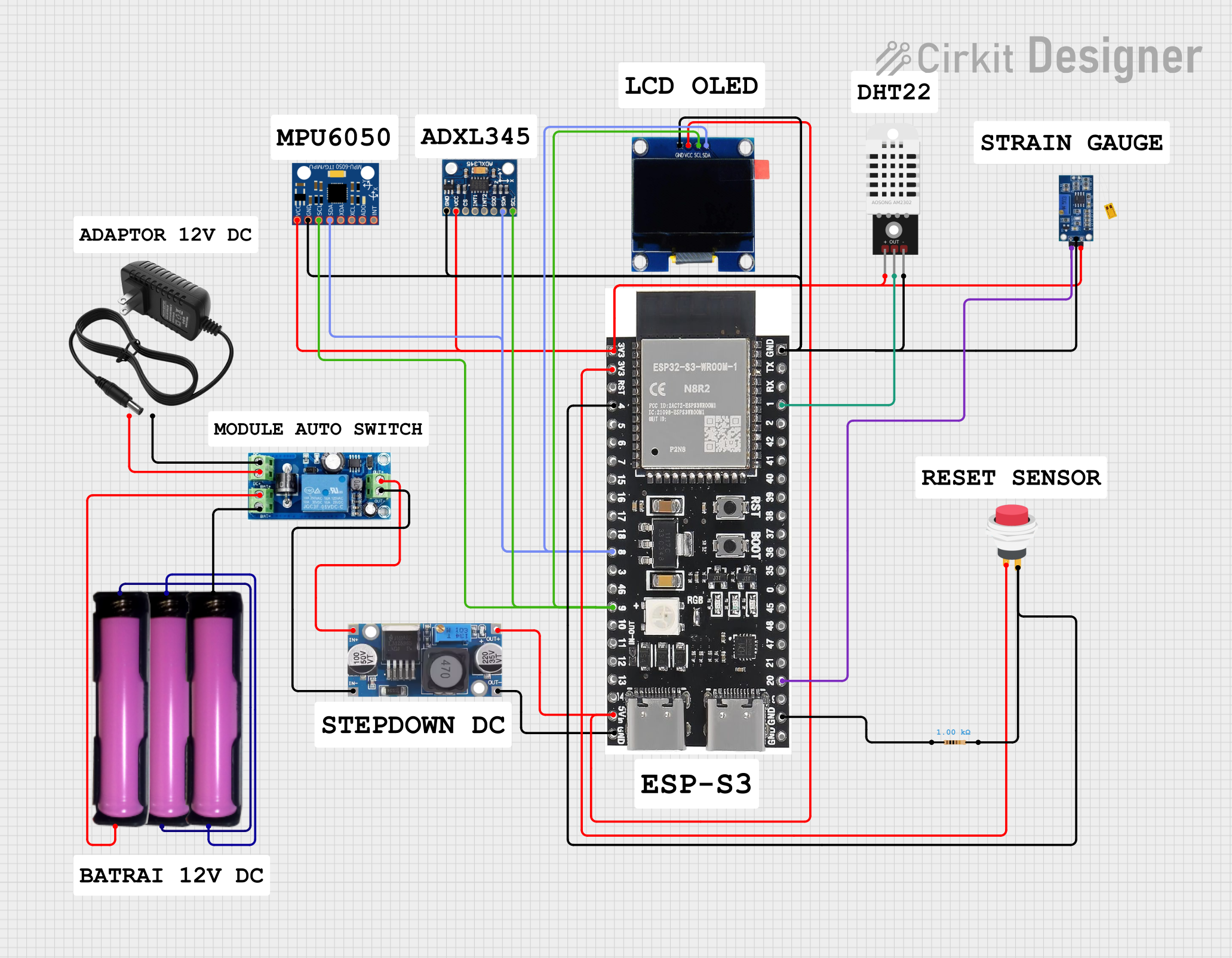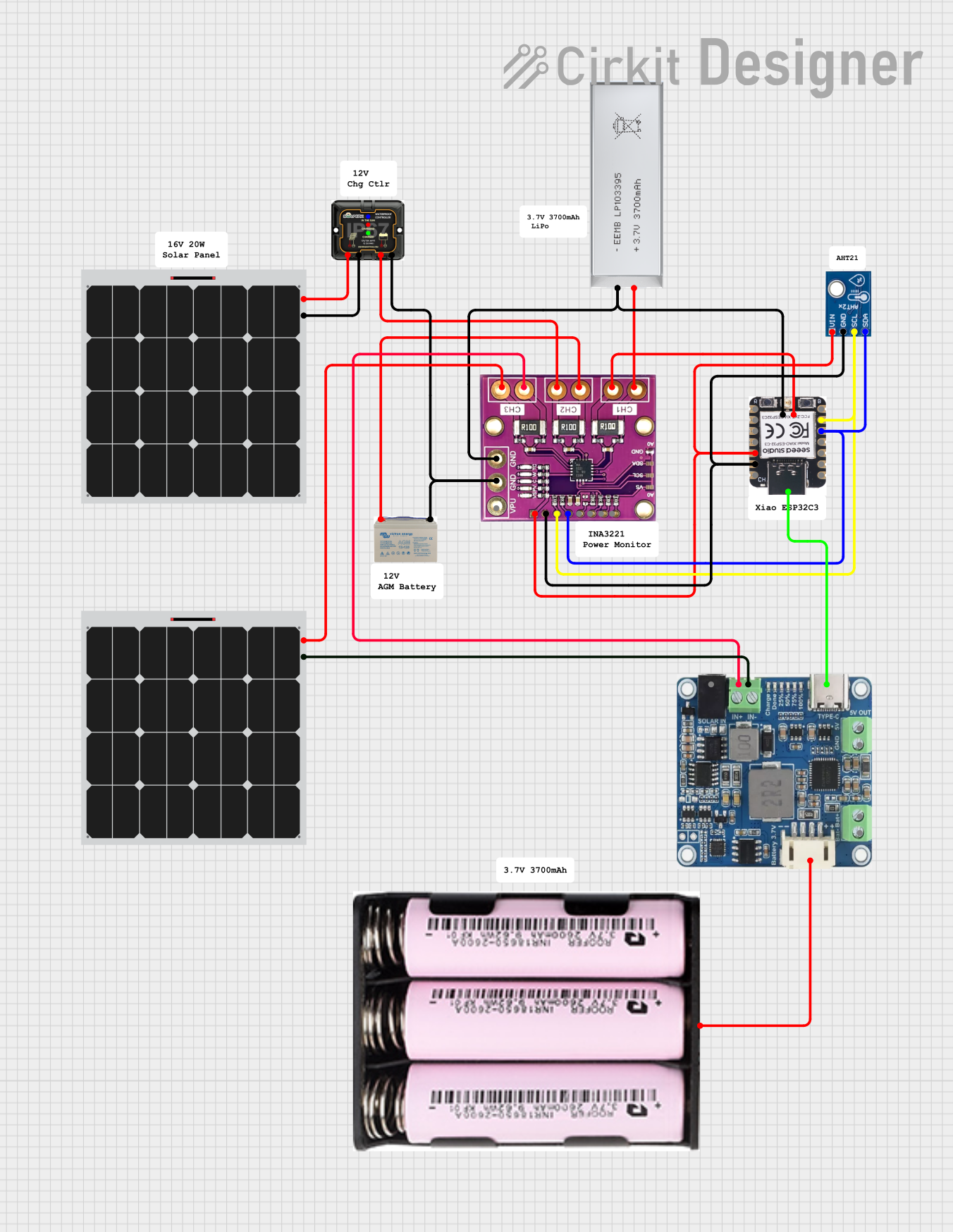
How to Use GUVA-S12SD: Examples, Pinouts, and Specs

 Design with GUVA-S12SD in Cirkit Designer
Design with GUVA-S12SD in Cirkit DesignerIntroduction
The GUVA-S12SD UV Light Sensor Module is an advanced electronic component designed to detect ultraviolet (UV) radiation. This sensor is capable of measuring the intensity of incident UV light, which is crucial for applications such as weather stations, UV exposure monitoring devices, and scientific research. The module includes a UV photodetector, an amplifier for signal processing, a voltage regulator for stable operation, and a communication interface for easy integration with microcontrollers like the Arduino UNO.
Explore Projects Built with GUVA-S12SD

 Open Project in Cirkit Designer
Open Project in Cirkit Designer
 Open Project in Cirkit Designer
Open Project in Cirkit Designer
 Open Project in Cirkit Designer
Open Project in Cirkit Designer
 Open Project in Cirkit Designer
Open Project in Cirkit DesignerExplore Projects Built with GUVA-S12SD

 Open Project in Cirkit Designer
Open Project in Cirkit Designer
 Open Project in Cirkit Designer
Open Project in Cirkit Designer
 Open Project in Cirkit Designer
Open Project in Cirkit Designer
 Open Project in Cirkit Designer
Open Project in Cirkit DesignerCommon Applications and Use Cases
- Monitoring UV index for weather stations
- UV exposure assessment for health and safety devices
- Scientific experiments involving UV light measurement
- Industrial process control where UV light is a factor
Technical Specifications
Key Technical Details
- Spectral Range: 200nm to 370nm
- Responsivity: 0.1 to 1.0
- Operating Voltage: 2.5V to 5.5V
- Output Voltage: 0V to 1V (linear relationship with UV intensity)
- Response Time: Less than 1 second
- Operating Temperature: -20°C to +85°C
Pin Configuration and Descriptions
| Pin Number | Name | Description |
|---|---|---|
| 1 | VCC | Power supply (2.5V to 5.5V) |
| 2 | GND | Ground connection |
| 3 | OUT | Analog output voltage |
Usage Instructions
How to Use the Component in a Circuit
- Power Supply: Connect the VCC pin to a power source between 2.5V and 5.5V.
- Ground: Connect the GND pin to the ground of your circuit.
- Signal Output: Connect the OUT pin to an analog input pin on your microcontroller to read the UV intensity levels.
Important Considerations and Best Practices
- Avoid exposing the sensor to direct sunlight for extended periods to prevent damage.
- Use a shield or cover to protect the sensor from physical damage and dust.
- Calibrate the sensor for your specific application to ensure accurate readings.
- Implement a smoothing algorithm in your code to deal with signal noise and fluctuations.
Example Code for Arduino UNO
// Define the analog pin connected to the sensor output
const int uvSensorPin = A0;
void setup() {
// Initialize serial communication at 9600 baud rate
Serial.begin(9600);
}
void loop() {
// Read the analog value from the sensor
int uvLevel = analogRead(uvSensorPin);
// Convert the analog value to a voltage level
float voltage = uvLevel * (5.0 / 1023.0);
// Print the voltage level to the Serial Monitor
Serial.print("UV Sensor Voltage: ");
Serial.println(voltage);
// Delay for a second before the next reading
delay(1000);
}
Troubleshooting and FAQs
Common Issues Users Might Face
- Inaccurate Readings: Ensure the sensor is properly calibrated and not exposed to direct sunlight for prolonged periods.
- No Output: Check the power supply and connections to the sensor. Ensure the OUT pin is connected to an analog input on the microcontroller.
- Fluctuating Readings: Implement a software filter or averaging algorithm to stabilize the readings.
Solutions and Tips for Troubleshooting
- Calibration: Use a known UV light source to calibrate the sensor's output against the UV index.
- Connections: Double-check all connections, including solder joints, for any loose or broken connections.
- Code Debugging: Verify that the code is correctly reading the analog pin and that the serial communication is properly set up.
FAQs
Q: Can the GUVA-S12SD sensor detect visible light? A: No, the sensor is designed to detect UV light and has a spectral range of 200nm to 370nm, which is outside the visible spectrum.
Q: How do I convert the voltage reading to UV index? A: You will need to calibrate the sensor with a known UV light source and establish a relationship between the voltage output and the UV index for your specific application.
Q: Is the sensor waterproof? A: The GUVA-S12SD is not inherently waterproof. It should be housed in a protective enclosure if used in moist or outdoor environments.
Q: What is the lifespan of the sensor? A: The lifespan can vary based on usage, but with proper care and protection from overexposure to UV light, the sensor can last for several years.
For further assistance or technical support, please contact the manufacturer or your local distributor.